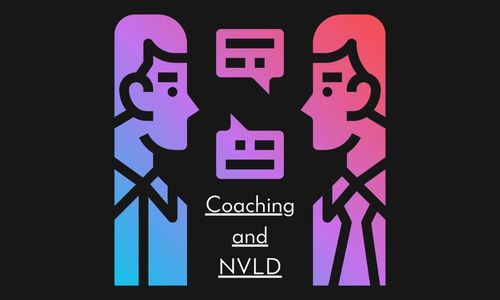Coaching flexes and adapts to the client’s needs. In order to understand how we coach clients diagnosed with NVLD, it is important to understand:
- What characterizes nonverbal learning disabilities?
- What do nonverbal learning disability challenges look like?
We will then present ways that coaching works with clients diagnosed with NVLD
What Characterizes NVLD?
Non-verbal learning disability (NVLD) is one common diagnosis that we work with. To understand how we work with individuals diagnosed with NVLD, it is important to understand what it is. The NVLD project does a great overview. As with any individual, with or without a diagnosis, coaching starts by identifying the individual’s strengths and challenges. NVLD is characterized by strengths in verbal abilities, with challenges and deficits within the visual-spatial realm.
What do NVLD challenges look like?
Deficits in the visual-spatial realm impact how individuals engage with and perceive the world. One researcher identified that “communication is 55% nonverbal, 38% vocal, and 7% words only.” That’s a whole lot of nonverbal communication that individuals diagnosed with NVLD are missing!
A common thread is that a lot of “learning,” whether academic, professional, or social occurs via implicit and nonverbal means.
Here are very brief examples of how these challenges can appear:
What are some challenges in Academia?
- Things not taught in the classroom explicitly can be missed (e.g. study skills, time management, etc)
- Navigating relationships with professors or peers can be challenging or misinterpreted
- Strategies that work for others just don’t work for you
What are some challenges in Careers?
- Onboarding into new roles can be especially hard
- Learning “office politics” can seem an impossibility
What are some challenges in Social Engagement?
- Difficulties forming friendships
- Missed social opportunities
How does coaching work with NVLD?
Here are some broad examples of how coaching works with NVLD. Keep in mind that each individual has unique strengths and challenges, so this is not an exhaustive list:
- Developing strategies that lean into verbal communication, which can help “translate” nonverbal communication into verbal communication (e.g. the use of questioning techniques)
- Explicitly teaching skills and strategies that aren’t taught explicitly elsewhere (e.g. executive function strategies around time management and organization)
- Exploring and developing metacognitive skills to better understand what other strengths an individual has to use to their advantage
- Developing appropriate advocacy skills that can be used to navigate life – and adapting these skills to different contexts
- Creating self-monitoring strategies that are explicit and less implicit to help learn from and grow from experiences to better prepare yourself for the next goal!





